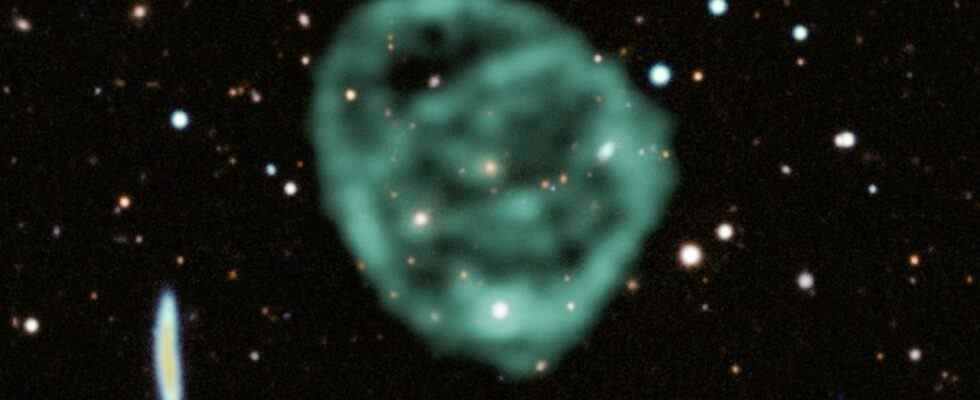In 2019, astronomers observed an obscure ring 16 times larger than the Milky Way Galaxy, smoky and lurking in space, waiting to be discovered. In fact, that same week, scientist Emil Lenc discovered a second ring, which he called “strange radio circles,” or ORCs. Now this ring has been viewed with a telescope in South Africa. So what is ORC?
Radio Circles – What is ORC?
First caught on astronomer Anna Kapinska’s “weird things” radar in 2019, ORC has made it onto the list of cosmic oddities we can’t explain. This pale and smoky circle, a billion light-years from Earth, has been taken for granted since Lenc named it strange radio circles.
Emil Lenc managed to capture the first image of ORCs by sharing all his findings about ORC with Australia’s chief scientific institution CSIRO and astrophysicist Ray Norris from Western Sydney University. According to preliminary data, it looked like a kind of supernova remnant, the stuff left behind when a star exploded.

However, Norris, who stated that none of the data matched, gave the following answer to the question of what is ORC:
We realized pretty quickly that it was something very different indeed. This is something quite new. They show us the structure in ORC1 that we didn’t know was there before.
Also, another thing that makes ORC-strange radio circles interesting is that they can only be seen with radio telescopes. These rings do not appear in X-ray telescopes like NASA’s Chandra or at infrared wavelengths like those used by James Webb.
Moreover, since the first discovery in 2019, researchers have only been able to find 5 different ORCs. Of course, since our knowledge of them is quite limited, ORC1, which was only detected by Lenc, has become the main subject of a new article to be published in the Monthly Notices of the Royal Astronomical Society.
The most recent study used MeerKAT, operated by the South African Radio Astronomy Observatory, to study the physics of the unusual ring. This device consists of 64 satellite dishes that listen to radio signals from deep space. More importantly, it can focus on ORC1 with much more detail than ASKAP can. It also allows it to determine the polarization necessary to understand its magnetic fields.

Using MeerKAT, the team that did the work was able to capture the highest resolution images of ORC ever. In the picture above, you can see the sharp quality difference between the two observations. Studies on the subject are currently ongoing at ASKAP and MeerKAT.
The most convincing prediction so far has again been made by Norris. Because he thinks ORCs are shock waves produced after the merger of supermassive black holes in an extremely distant galaxy. In fact, it is stated that black holes have been discovered in the center of 3 of the 5 ORCs discovered so far, and the other 2 are under investigation. The scientific world is also very warm to Norris’s explanation.
What do you think about this subject? Don’t forget to share your feedback with us on the SDN Forum or in the comments!
